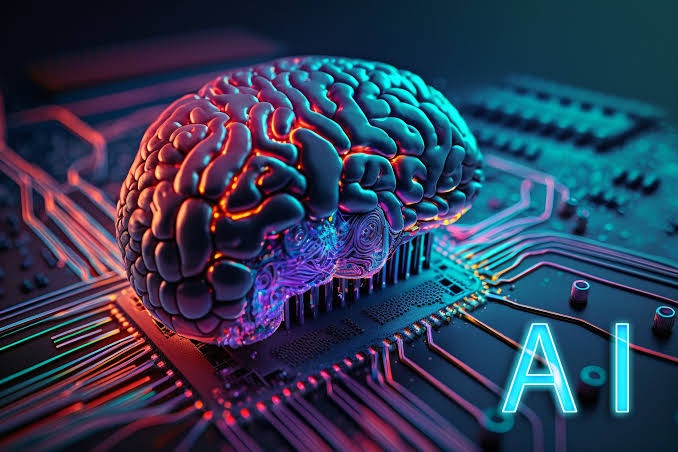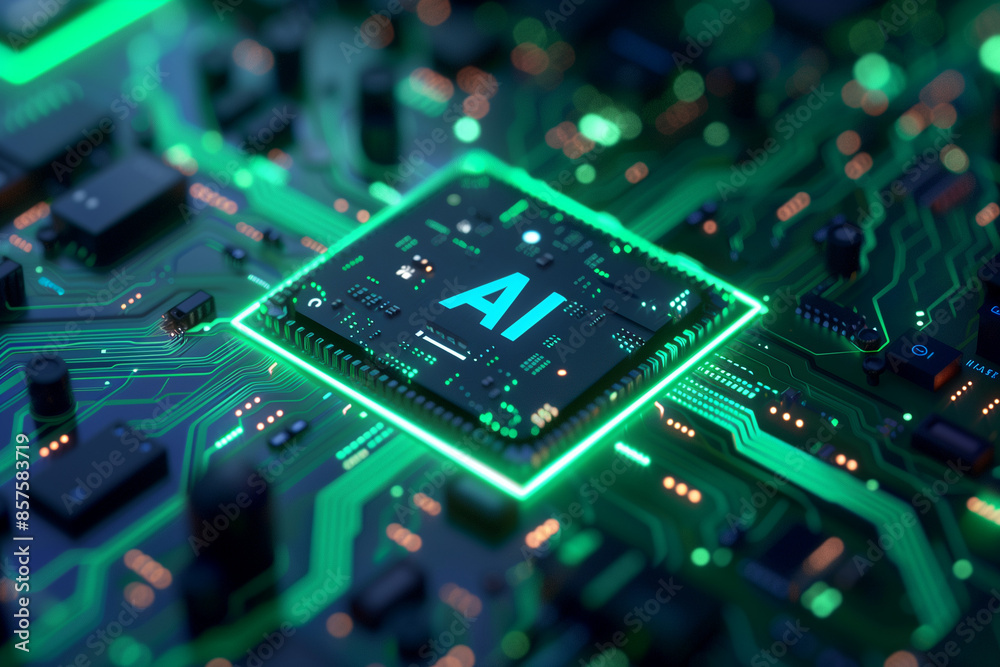In an increasingly interconnected world, one term consistently dominates conversations about the future: Artificial Intelligence (AI). From powering personalized recommendations on your favorite streaming service to enabling self-driving cars, Artificial Intelligence is no longer just a concept from science fiction; it’s an integral part of our daily lives. But what exactly is AI, and how is it reshaping our world? This comprehensive guide will explain the fundamentals of Artificial Intelligence, delve into its workings, explore its diverse applications, and discuss its profound impact on society.
What is Artificial Intelligence (AI)?
At its core, Artificial Intelligence refers to the simulation of human intelligence processes by machines, especially computer systems. These processes include learning (the acquisition of information and rules for using the information), reasoning (using rules to reach approximate or definite conclusions), and self-correction. Unlike traditional programming that relies on explicit instructions for every possible scenario, AI systems are designed to learn, adapt, and make decisions based on data.
The goal of Artificial Intelligence is to enable machines to perform tasks that typically require human intelligence. This encompasses a broad spectrum of capabilities, from understanding natural language and recognizing images to solving complex problems and making strategic decisions.
How Does Artificial Intelligence Work?
The magic behind Artificial Intelligence lies in its ability to process vast amounts of data, identify patterns, and learn from them. Several key technologies underpin modern AI systems:
- Machine Learning (ML): This is a subset of AI that gives systems the ability to automatically learn and improve from experience without being explicitly programmed. ML algorithms are trained on data to build models that can make predictions or decisions.
- Deep Learning (DL): A further subset of Machine Learning, Deep Learning uses artificial neural networks with multiple layers (hence “deep”) to learn complex patterns in data. It excels in tasks like image recognition, speech recognition, and natural language understanding.
- Natural Language Processing (NLP): NLP enables computers to understand, interpret, and generate human language. This technology is crucial for chatbots, language translation, and voice assistants.
- Computer Vision: This field allows computers to “see” and interpret visual information from images and videos, enabling applications like facial recognition, object detection, and autonomous navigation.
- Robotics: While not solely AI, robotics often integrates AI to give robots the ability to perceive their environment, learn, and perform complex tasks autonomously.
By leveraging these techniques, AI systems can process information in ways that mimic cognitive functions, leading to intelligent behavior and powerful capabilities.
Types of Artificial Intelligence
Artificial Intelligence can be broadly categorized based on its capabilities and intelligence levels:
Narrow AI (ANI)
Also known as “Weak AI,” Narrow AI is the most prevalent form of AI today. It is designed and trained for a specific task or a narrow range of tasks. Examples include:
- Voice assistants like Siri or Alexa
- Recommendation engines on Netflix or Amazon
- Spam filters in email
- Image recognition software
- Chess-playing computers
While impressive within their specific domain, Narrow AI systems cannot perform tasks outside their programming.
General AI (AGI)
Known as “Strong AI,” Artificial General Intelligence is a theoretical form of AI where a machine possesses human-level cognitive abilities across a wide range of tasks. An AGI system would be able to understand, learn, and apply knowledge to solve any problem, much like a human being. This level of AI is still largely in the realm of research and development.
Super AI (ASI)
Artificial Super Intelligence is a hypothetical intelligence that far surpasses human intelligence and capabilities. An ASI would not only be able to mimic human intelligence but would also possess superior memory, faster data processing, and decision-making abilities that go beyond human comprehension. This remains a speculative concept.
Applications of Artificial Intelligence Across Industries
The transformative power of Artificial Intelligence is evident in its widespread adoption across virtually every industry. Here are just a few examples:
- Healthcare: AI assists in disease diagnosis (e.g., analyzing medical images), drug discovery, personalized treatment plans, and predictive analytics for patient outcomes.
- Finance: Used for fraud detection, algorithmic trading, credit scoring, and personalized financial advice through chatbots.
- Customer Service: AI-powered chatbots and virtual assistants provide 24/7 support, answer queries, and streamline customer interactions.
- Transportation: Self-driving cars, intelligent traffic management systems, and optimized logistics for supply chains all rely heavily on Artificial Intelligence.
- Education: Personalized learning platforms, intelligent tutoring systems, and automated grading are enhancing the educational experience.
- Manufacturing: AI optimizes production processes, predicts equipment failures, and enhances quality control through robotic automation and computer vision.
- Agriculture: Precision farming uses AI to monitor crop health, predict yields, and manage resources efficiently.
These applications underscore how Artificial Intelligence is driving innovation and efficiency across diverse sectors, leading to unprecedented advancements.
Benefits of Embracing Artificial Intelligence
The widespread adoption of AI is driven by its numerous tangible benefits:
- Increased Efficiency and Productivity: AI automates repetitive and time-consuming tasks, freeing up human workers to focus on more complex and creative endeavors.
- Improved Decision-Making: AI can analyze vast datasets to uncover insights and patterns that would be impossible for humans to detect, leading to more informed and accurate decisions.
- Enhanced Personalization: From customized shopping experiences to tailored content recommendations, AI significantly improves user experience by delivering highly relevant information and services.
- Problem Solving: Artificial Intelligence can tackle complex problems in fields like scientific research, climate modeling, and urban planning with greater speed and accuracy.
- Innovation: AI acts as a catalyst for innovation, enabling the development of entirely new products, services, and business models.
Challenges and Ethical Considerations in Artificial Intelligence
Despite its immense potential, the rise of Artificial Intelligence also presents significant challenges and ethical dilemmas that demand careful consideration:
- Job Displacement: Automation driven by AI could lead to job losses in sectors with repetitive tasks, necessitating retraining and new economic strategies.
- Bias in Algorithms: If trained on biased data, AI systems can perpetuate and even amplify existing societal biases, leading to unfair or discriminatory outcomes.
- Privacy Concerns: AI systems often require access to large amounts of personal data, raising questions about data security, privacy, and surveillance.
- Accountability and Control: Determining responsibility when AI systems make errors or cause harm can be complex, especially in autonomous systems.
- Ethical Dilemmas: As AI becomes more sophisticated, questions arise about its use in critical decision-making, military applications, and the potential for misuse.
Addressing these challenges requires robust regulatory frameworks, ethical guidelines, and a collaborative effort from governments, industry, and academia to ensure responsible AI development and deployment.
The Future of Artificial Intelligence
The trajectory of Artificial Intelligence promises continued evolution and integration into every facet of life. We can anticipate:
- Further Integration: AI will become even more embedded in smart homes, smart cities, and everyday devices, making environments more responsive and intelligent.
- Advancements in AGI Research: While true General AI remains a distant goal, significant research efforts are dedicated to building more adaptable and broadly capable AI systems.
- Explainable AI (XAI): There will be a growing emphasis on developing AI models that can explain their decisions, making them more transparent and trustworthy, especially in critical applications like healthcare or finance.
- Human-AI Collaboration: Instead of full automation, the future may increasingly involve “augmented intelligence,” where AI tools enhance human capabilities rather than replacing them entirely.
- AI for Good: Efforts will intensify to leverage AI to address global challenges such as climate change, poverty, and disease, aligning technological progress with humanitarian goals.
Artificial Intelligence (AI) represents one of the most profound technological shifts of our time. From its foundational concepts like Machine Learning to its diverse applications spanning every industry, AI is fundamentally transforming how we live, work, and interact with the world. While its potential benefits are immense, it also brings forth complex ethical and societal challenges that demand careful navigation.
Understanding Artificial Intelligence is no longer optional; it’s essential for navigating the future. By fostering responsible development, promoting ethical guidelines, and investing in continuous learning, we can harness the power of AI to build a more efficient, innovative, and prosperous future for everyone.


